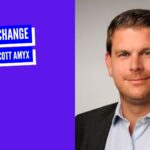I had a chance to interview April Rudin, a well-respected blogger on the Huffington Post and the founder of The Rudin Group, a wealth marketing solutions firm specializing in ultra-high-net-worth/ high-net-worth (UHNW/HNW) client acquisition strategies about how wearable technologies could disrupt the UHNW/HNW segment of the financial services vertical.
What Are Some Myths That People Have About the Über Rich?
A common myth is that UHNW means an old guy sitting in a mahogany-trimmed leather chair, smoking a cigar in his mansion; however, that today’s UHNW/HNW is more likely to be sitting in an airplane chair than at home. As a global citizen without boundaries, s/he is in Dubai, Silicon Valley, Singapore, India and just about anywhere else. They don’t live out a single home but multiple residences around the world as they conduct business and pleasure.
Another common myth is that the UHNW are not on the Internet, when in reality they are the first to adopt new technologies because they are mobile and global. They want access to real-time information and having access to that information is more mission-critical for them than for the average person. They want their information in infographic fashion, not a 50-page report. It shouldn’t be too granular but more like a dashboard that consolidates views across multiple platforms.
How Would Wearables Benefit the UHNW?
Since the UHNW are mobile and global by nature, impulse buys are extra complicated for them. When an average person wants to purchase something on impulse, s/he simply uses a credit card. By contrast, as global citizens, the UHNW have foreign currencies in multiple countries to contend with. Before buying art, a building, a car or the latest haute couture, they need to consider the currency exchange rates. What are their holdings and in what currencies and where? They need access to funds in multiple countries. (And then, there are tax implications to those transactions.)
What they need are hands-free, wearable computing devices that can function as a virtual financial assistant that learns and customizes their recommendations. For example, a wearable smartwatch can inform a UHNW person that it’s better to buy this item in this country and fund it this way, using this currency. Today, for most UHNW/HNW individuals, it’s a cobbled together system at best. So, this is where the opportunity lies for wearable developers — to build contextually intelligent wearables with integration to complex financial systems, without ever pulling out a smartphone or opening a laptop.
What Is an Optimal Wearable User Experience for the UHNW?
Shortly, the UHNW’s smartphones will function as their virtual wallets, holding their security authentication information, the ability to make payments in a range of currencies, and peer-to-peer contact information – all in one place and all insurable.
Wearables will push the boundary so that your wallet is on you, on your smartwatch, the sleeve of your suit, and other forms to be imagined. The key is that the user experience for the UHNW has to be seamless. They have a demanding schedule on multiple continents and they don’t want to fumble with their wallets or scroll through accounts on their phone.
The transaction needs to be frictionless. Any friction that the average person faces with mobile payment is compounded for the UHNW. If you can make wearables work for the UHNW, then you can make it work for everyone else. The stakes are so much higher for the UHNW. Given that the first iteration of wearables development is the most expensive, the early UHNW adopters can finance later innovation for mass market wearables.
How Would Single- and Multi-Family Offices Use Wearables?
Single- and multi-family offices (SFO/MFO) are the legal entity that manages the UHNW’s business affairs. The SFO/MFO act as the liaison to interface between the UHNW and insurance, homes, businesses, and transactions.
For these SFO/MFOs, there’s no physical place of work anymore, as many of them work remotely. Wearables have to enable employees to perform their work anywhere and hands-free, yet still access everything that they need, such as trading platforms, accounts across financial institutions and secure documents. That means they can be present at more of their kids’ soccer games and still stay on top of their work demands.
Originally published on Innovation Insights on June 12, 2014. Author Scott Amyx.


















